Dacia Spring vs Hyundai IONIQ 5 - Differences and prices compared
Compare performance (65 HP vs 650 HP), boot space and price (14500 £ vs 38500 £ ) at a glance. Find out which car is the better choice for you – Dacia Spring or Hyundai IONIQ 5?
Costs and Efficiency:
When it comes to price and running costs, the biggest differences usually appear. This is often where you see which car fits your budget better in the long run.
Dacia Spring has a significantly advantage in terms of price – it starts at 14500 £ , while the Hyundai IONIQ 5 costs 38500 £ . That’s a price difference of around 24000 £.
In terms of energy consumption, the advantage goes to the Dacia Spring: with 13.20 kWh per 100 km, it’s a bit more efficient than the Hyundai IONIQ 5 with 15.60 kWh. That’s a difference of about 2.40 kWh.
As for electric range, the Hyundai IONIQ 5 performs clearly better – achieving up to 570 km, about 342 km more than the Dacia Spring.
Engine and Performance:
Under the bonnet, it becomes clear which model is tuned for sportiness and which one takes the lead when you hit the accelerator.
When it comes to engine power, the Hyundai IONIQ 5 has a convincingly edge – offering 650 HP compared to 65 HP. That’s roughly 585 HP more horsepower.
In acceleration from 0 to 100 km/h, the Hyundai IONIQ 5 is clearly quicker – completing the sprint in 3.50 s, while the Dacia Spring takes 13.70 s. That’s about 10.20 s faster.
In terms of top speed, the Hyundai IONIQ 5 performs significantly better – reaching 260 km/h, while the Dacia Spring tops out at 125 km/h. The difference is around 135 km/h.
There’s also a difference in torque: Hyundai IONIQ 5 pulls clearly stronger with 770 Nm compared to 125 Nm. That’s about 645 Nm difference.
Space and Everyday Use:
Whether family car or daily driver – which one offers more room, flexibility and comfort?
Seats: Hyundai IONIQ 5 offers slightly more seating capacity – 5 vs 4.
In curb weight, Dacia Spring is convincingly lighter – 1013 kg compared to 1955 kg. The difference is around 942 kg.
In terms of boot space, the Hyundai IONIQ 5 offers clearly more room – 520 L compared to 308 L. That’s a difference of about 212 L.
In maximum load capacity, the Hyundai IONIQ 5 performs noticeable better – up to 1580 L, which is about 576 L more than the Dacia Spring.
When it comes to payload, Hyundai IONIQ 5 significantly takes the win – 530 kg compared to 302 kg. That’s a difference of about 228 kg.
Who wins the race?
The Hyundai IONIQ 5 proves to be leaves the rival little chance and therefore becomes our DriveDuel Champion!
Hyundai IONIQ 5 is the better all-rounder in this comparison.
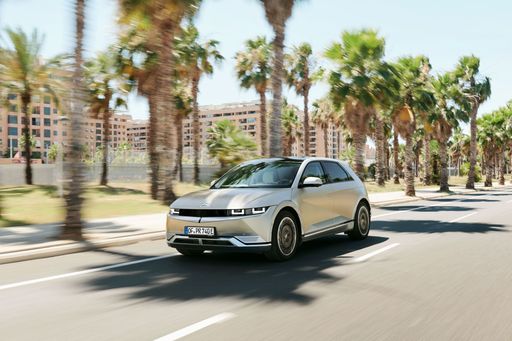
Hyundai IONIQ 5
Costs and Consumption
View detailed analysis
Engine and Performance
View detailed analysis
Dimensions and Body
View detailed analysis
Dacia Spring
The Dacia Spring is an unpretentious city electric that strips EV ownership down to the essentials, offering clean, fuss-free transport for daily urban life. It won't impress luxury-seekers, but its cheerful practicality and rock-bottom running costs make it a clever, no-nonsense choice for anyone who wants electric mobility without the drama.
details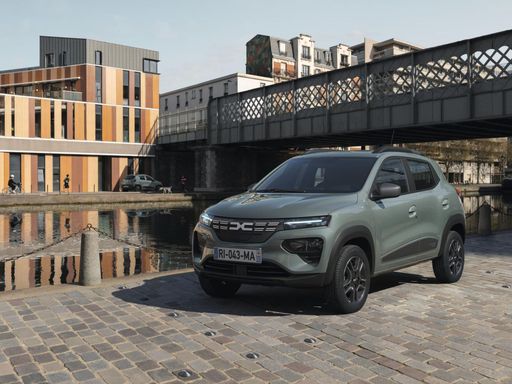
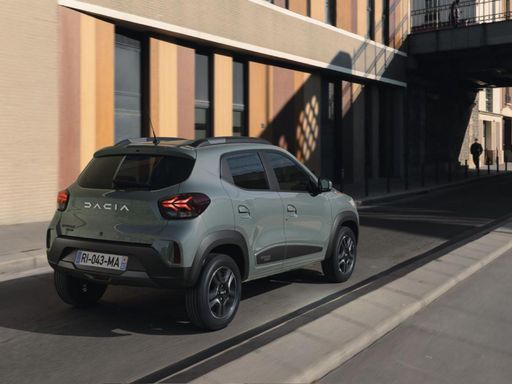
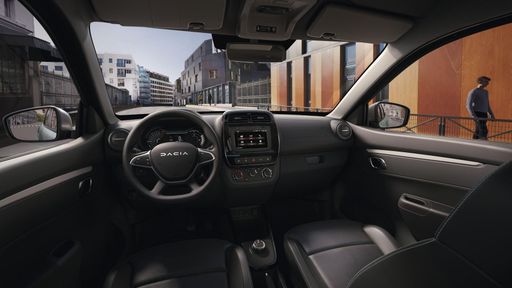
Hyundai IONIQ 5
The Hyundai IONIQ 5 looks like a spaceship that moved into suburbia, pairing bold retro‑futuristic styling with a roomy, cleverly laid-out cabin that makes long trips surprisingly comfortable. Its electric character delivers instant, silky acceleration and low running costs, making it a smart, slightly cheeky pick for buyers who want tech, practicality and personality without the drama.
details
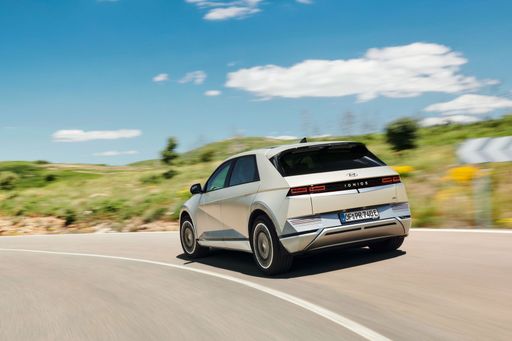
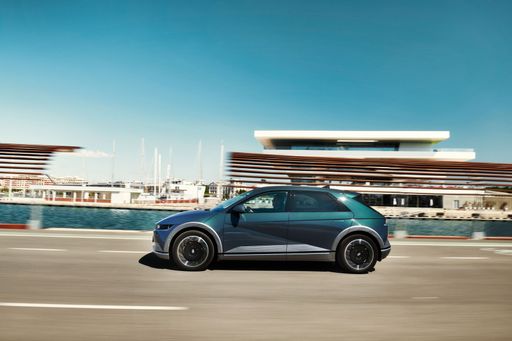
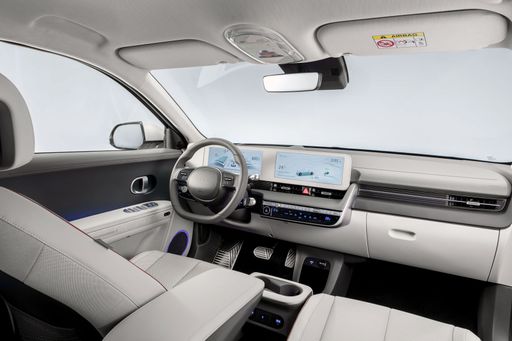
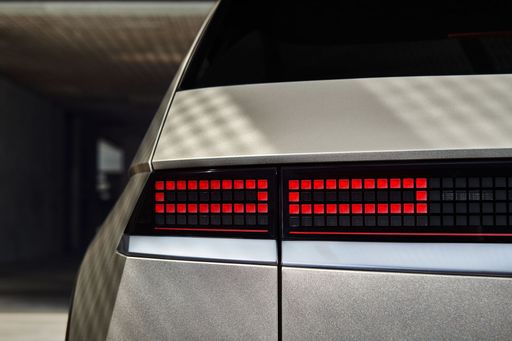
Costs and Consumption |
|
|---|---|
|
Price
14500 - 17100 £
|
Price
38500 - 64200 £
|
|
Consumption L/100km
-
|
Consumption L/100km
-
|
|
Consumption kWh/100km
13.2 - 14.1 kWh
|
Consumption kWh/100km
15.6 - 21.2 kWh
|
|
Electric Range
225 - 228 km
|
Electric Range
440 - 570 km
|
|
Battery Capacity
26.80 kWh
|
Battery Capacity
63 - 84 kWh
|
|
co2
0 g/km
|
co2
0 g/km
|
|
Fuel tank capacity
-
|
Fuel tank capacity
-
|
Dimensions and Body |
|
|---|---|
|
Body Type
SUV
|
Body Type
SUV
|
|
Seats
4
|
Seats
5
|
|
Doors
5
|
Doors
5
|
|
Curb weight
1013 - 1050 kg
|
Curb weight
1955 - 2275 kg
|
|
Trunk capacity
308 L
|
Trunk capacity
480 - 520 L
|
|
Length
3701 mm
|
Length
4655 - 4715 mm
|
|
Width
1583 mm
|
Width
1890 - 1940 mm
|
|
Height
1519 mm
|
Height
1585 - 1605 mm
|
|
Max trunk capacity
1004 L
|
Max trunk capacity
1540 - 1580 L
|
|
Payload
265 - 302 kg
|
Payload
385 - 530 kg
|
Engine and Performance |
|
|---|---|
|
Engine Type
Electric
|
Engine Type
Electric
|
|
Transmission
Automatic
|
Transmission
Automatic
|
|
Transmission Detail
Reduction Gearbox
|
Transmission Detail
Reduction Gearbox
|
|
Drive Type
Front-Wheel Drive
|
Drive Type
Rear-Wheel Drive, All-Wheel Drive
|
|
Power HP
44 - 65 HP
|
Power HP
170 - 650 HP
|
|
Acceleration 0-100km/h
13.7 - 19.1 s
|
Acceleration 0-100km/h
3.5 - 8.5 s
|
|
Max Speed
125 km/h
|
Max Speed
185 - 260 km/h
|
|
Torque
113 - 125 Nm
|
Torque
350 - 770 Nm
|
|
Number of Cylinders
-
|
Number of Cylinders
-
|
|
Power kW
33 - 48 kW
|
Power kW
125 - 478 kW
|
|
Engine capacity
-
|
Engine capacity
-
|
General |
|
|---|---|
|
Model Year
2024
|
Model Year
2024 - 2025
|
|
CO2 Efficiency Class
A
|
CO2 Efficiency Class
A
|
|
Brand
Dacia
|
Brand
Hyundai
|
What drive types are available for the Dacia Spring?
The Dacia Spring is available as Front-Wheel Drive.




